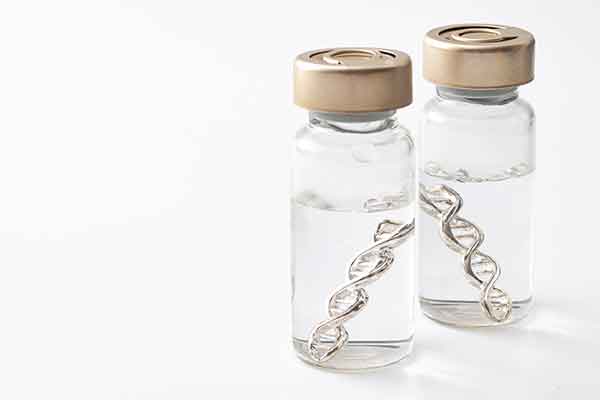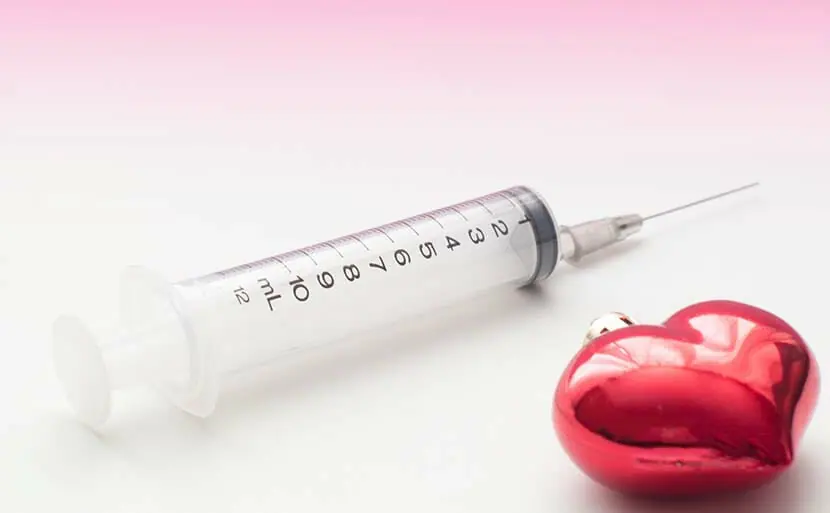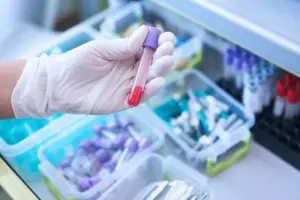Explore the actual age distribution of individuals in their 20s, 30s, and 40s who underwent NIPT at Hiro Clinic. Our commitment to transparency is supported by expert supervision from our doctors.
What is prenatal diagnosis?
‘Prenatal diagnosis’ refers to a diagnostic procedure in which a doctor makes a comprehensive judgment based on the findings of a ‘prenatal examination’ to check the baby’s developmental status and morphological abnormalities while in the mother’s womb.
In particular, those performed for the purpose of checking whether the baby is born with a birth defect, including chromosomal abnormalities, are often referred to as ‘prenatal diagnosis’. There are two types of tests used in ‘prenatal diagnosis’ to check for the presence of chromosomal abnormalities: non-confirmatory and confirmatory.
Non-conclusive tests are used to screen for possible chromosomal or genetic abnormalities and include NIPT, maternal serum marker tests (Quattrotest) and ultrasound. The amount of information obtained is limited and only indicates a high or low likelihood.
Definitive tests, on the other hand, are designed to accurately diagnose whether the foetus has chromosomal or genetic abnormalities and include amniotic fluid and chorionic villus tests. These tests carry a certain percentage of risks, such as water breaking, infection and miscarriage, but the amount of information they provide is so great that they are essential for a definitive diagnosis.
Ultrasound examinations (echography) and maternal blood tests are called non-invasive tests because they cause little damage to the mother or foetus. On the other hand, amniocentesis and chorionography are distinguished as invasive tests because they require puncturing the mother and extracting placental tissue, which can be very damaging and carry a risk of miscarriage.

What is NIPT?
NIPT is “a test to test for chromosomal abnormalities such as 21 trisomy (Down syndrome), 18 trisomy (Edwards syndrome) and 13 trisomy (Patau syndrome) in the foetus from blood taken from the mother”. Also known as non-invasive prenatal genetic testing, it can test for chromosomal abnormalities in the baby from the foetal DNA present in the maternal blood.
NIPT Hiro Clinic can be taken from the time the pregnancy is confirmed by ultrasound, with results available in an average of one week. The ability to receive test results at an early stage allows for multiple options. It is a non-invasive test with minimal damage, and as a prenatal diagnosis, it is a non-confirmatory test that is a screening test. Therefore, the result of NIPT can take the form of a ‘positive’ result with a high probability of chromosomal abnormalities or a ‘negative’ result with a low probability of chromosomal abnormalities.
Prenatal diagnostics that can be performed with blood include maternal serum markers (Quattro test) and combined tests, but compared to these tests, NIPT is characterised by the high accuracy of the test itself in terms of sensitivity and specificity. For example, in the case of 21 trisomy (Down syndrome), one of the chromosome abnormalities, NIPT has a sensitivity of 99.9% and a specificity of 99.90%, which are extremely accurate results.
However, the results of NIPT alone cannot diagnose foetal chromosomal abnormalities, and in the event of a positive result, a consultation and genetic counselling by a specialist doctor and a definitive amniotic fluid or chorionic villus test are strongly recommended.
One of the main objectives of NIPT is to “reduce the number of definitive tests such as trophoblastic and amniotic fluid tests, which carry a risk of miscarriage at the time of testing”. It provides early information about the baby’s condition and reduces the risk of miscarriage associated with testing by only performing definitive tests such as trophoblastic and amniotic fluid tests when abnormalities are found in non-confirmatory tests.
The history of NIPT
NIPT is still a young test, but it has already gained citizenship in other countries. This section briefly reviews the history of NIPT, trends overseas and the history in Japan.
The origins of NIPT and trends overseas
NIPT was developed in the USA in 2011. In California alone, 1.3 million pregnant women were tested between 2009 and 2012.
With 1 in 830 women in the USA and 1 in 920 women in Europe having a 21 trisomy (Down syndrome), the need for non-invasive testing and diagnostic procedures has always been very high. In the USA and Europe, it is a national policy that all pregnant women should be offered an option for prenatal diagnosis, and in the USA, when a woman becomes pregnant, she is first given a brochure about prenatal diagnosis, and unless she specifically refuses, it is common for her to undergo the test.
Although the data is a little older, in the USA, the uptake rate of nonconfirmatory tests is 70% and the uptake rate of confirmatory tests is 5-10% as of 2010. The highest rate of nonconfirmatory testing is in England & Wales, where as many as 88% of pregnant women took a nonconfirmatory test in 2009.
NIPT in Japan
In Japan, before NIPT became widespread, the most common prenatal tests were the quattro test, chorionic villus test and amniotic fluid test. The recommended timing of each test and the time it takes to obtain results are as follows.
- Quattro test: recommended testing time is around 15-17 weeks’ gestation, with an average time to results of about 10 days to 2 weeks
- Chorionic villus test: recommended testing time is around 11-14 weeks, with an average time to results of about 2-3 weeks
- Amniotic fluid test: recommended testing time is around 15-18 weeks. Average time to results is about 2-4 weeks
Quattro testing, like NIPT, can be diagnosed from the mother’s blood, but it is available at a later date and it is difficult to get a definitive test after a quattro test has revealed suspected chromosomal abnormalities.
Amniotic fluid and chorionic villus tests can basically diagnose the presence or absence of chromosomal abnormalities in a single test, but as mentioned above, these tests carry certain risks for the mother and the foetus. In other words, there were no tests for screening purposes that could be taken casually.
NIPT in Japan began in 2013, two years after testing began in the USA, and one year later in 2014, 10 000 pregnant women were tested at 47 facilities in Japan.
The most common reason for pregnant women in Japan to undergo NIPT testing is that they are giving birth at an older age. However, in recent years, the reasons are not limited to the age of the pregnant woman, but also include wanting to know if the baby has any chromosomal abnormalities during pregnancy and to relieve any anxiety.
Age and risk of foetal disability
The probability of a baby being born with a disability is known to depend on the mother’s age at birth; the older the child is at birth, the higher the risk of disability. This is because the higher the age of birth, the higher the probability that the foetus will have a chromosomal abnormality.
What is chromosomal abnormality?
To begin with, chromosomes are chain-like structures found in the ‘nucleus’, the tissue inside the cell. Chromosomes contain genetic information – DNA – and each chromosome contains hundreds or thousands of genes. Chromosomes are inherited half from the father and half from the mother, so there are two sets of chromosomes. No two people have exactly the same chromosomes, even brothers and sisters, except in the case of identical twins, as which genetic information is inherited varies from person to person. This is why chromosomes are said to be the ultimate personal information. The number of chromosomes varies between species, but in humans the normal number is 23 pairs of 46 chromosomes.
Chromosome abnormalities can be divided into two categories: abnormalities in number (numerical abnormalities) and abnormalities in shape (structural abnormalities).
Numerical abnormalities occur when two pairs of chromosomes are increased to three or, conversely, decreased to one. 21 trisomy (Down syndrome) , which occurs when chromosome 21 is reduced to three chromosomes, is caused by a numerical chromosome abnormality. Triple X syndrome (trisomy X) is a chromosomal abnormality that occurs only in females and is caused by the presence of three X chromosomes, the sex chromosomes.
Structural abnormalities are those in which the number of chromosomes is normal, but some of the chromosomes are missing, duplicated or swapped in position, resulting in abnormal gene function. For example, if a structural abnormality occurs in the 15q11-15q13 region of chromosome 15, the UBE3A gene does not work properly, resulting in Angelman syndrome, which is characterised by severe mental developmental delay, epilepsy, etc.
Furthermore, chromosomal abnormalities are also significantly associated with miscarriage. It is thought that 50-70% of diagnosed miscarriages are associated with chromosomal abnormalities, and it is known that 75% of miscarriages occur by around 8 weeks’ gestation if the chromosomes are numerically abnormal. In the case of structural abnormalities, there is a reported 10-20% chance of miscarriage.
However, congenital diseases caused by chromosomal abnormalities, such as 21 trisomy (Down syndrome), vary greatly from person to person, and even when the same chromosome or genetic abnormality is present, the severity of symptoms at birth and the course of the disease after birth are completely different for each individual.
Relationship between age at birth and Down syndrome and other chromosomal abnormalities
Citation: Ministry of Health, Labour and Welfare – Report of ‘the Study Group on the Future of Specific Treatment Support Services for People Suffering from Infertility’
The older the mother is at birth, the higher the probability that the baby will have chromosomal abnormalities. The graph above shows that the probability increases dramatically, especially for older mothers who give birth in their 40s or older.
The reason for this is mainly due to the ageing of the eggs. Sperm continue to be produced in the male body throughout his life, whereas follicle cells, the source of the egg, are only produced during the foetal period. Both sperm and egg combine to form a fertilised egg, which undergoes meiosis, a process that divides and reduces chromosomes before maturation. The egg is stored in the ovary in the state of meiosis and undergoes final meiosis just before ovulation. In older births, the eggs are stored for too long and the chromosomes cannot be divided properly, making them more prone to abnormalities in the number and structure of chromosomes.
Would you regret not having a prenatal diagnosis?
On the other hand, chromosomal abnormalities occur at a certain rate even at a young childbearing age, one in 500 children born to pregnant women in their 20s is known to have a chromosomal abnormality. You may regret not having undergone NIPT.
It’s not that ‘I’m not in my 40s so I don’t need to worry’ or ‘prenatal diagnosis is for older mothers’, but that NIPT is worthwhile for people of all ages to have.

Age distribution and proportion who actually underwent NIPT

| Average age of examinees | Under 35 | 35 over |
|---|---|---|
| 35.40 years old | 12,373 people | 16,897 people |
The above table shows the percentage of 29,269 pregnant women who actually underwent testing at Hiro Clinic NIPT, divided by age group. (as of 16 Feb 2023)
Looking at these figures, it may be noticed that a high percentage of pregnant women in their 30s take the test.
In fact, NIPT testing is recommended by obstetricians and gynaecologists in Japan for pregnant women aged 35 years and over, but many people under 35 years of age also want to be tested.
For more information, please refer to the ‘Tabulation of NIPT test results of more than 66,000 pregnant women in Japan‘.
Summary
The above explains in detail what prenatal diagnosis is, what NIPT is, and chromosomal abnormalities and the age of birth, as well as showing the number and percentage of people who have undergone prenatal diagnosis at our hospital, by age group. Many conventional prenatal diagnoses involve risks and some people may not have had the courage to undergo the test, but NIPT has the great advantage of determining whether there is a high or low possibility of chromosomal abnormalities with almost no burden on either the mother or the foetus.
If you are older than 35 years of age or have an older child with a chromosomal abnormality, or if you want to be “fully prepared for the birth of your child”, please consider undergoing NIPT at an early age.
【References】
- New prenatal diagnosis misses 20% of chromosomal abnormalities, US study (Asahi Shimbun Digital / 5 Feb 2013)
- New prenatal diagnosis, 10,000 people underwent the test last year, up from the first year (Asahi Shimbun Digital, 29 June 2015).
- Nihon Keizai Shimbun evening edition – Increased demand for new prenatal diagnosis Over 1,000 people received prenatal diagnosis in three months Improved information and explanation is essential( 5 Jul 2013 6:30)
- Aiko Sasaki, Haruhiko Sago et al – Trends in prenatal genetic testing in Japan 1998-2016, Japanese Journal of Perinatal and Neonatal Medicine 2018;54:101-107
- Sekiguchi M,Sasaki A et al – Impact of the introduction of Non-invasive pretanal genetic testing on invasive tests:2017;57:35-36
- Department of Obstetrics, Aichi General Centre for Child Health and Medical Care – For couples considering prenatal diagnosis
- Intractable Disease Information Centre – Angelman syndrome (designated incurable disease 201)
- Japanese Society for Reproductive Medicine – To the public: reproductive medicine
- Ministry of Health, Labour and Welfare – Report of ‘the Study Group on the Future of Specific Treatment Support Services for People Suffering from Infertility’
Q&A
-
QWhat is the rate of NIPT (Non-Invasive Prenatal Testing) among those in their early thirties?Generally, the rate is higher among pregnant women in their forties. However, according to our data, there is no age limit, so pregnant women in their thirties have the highest rate of undergoing NIPT. This is because many individuals, regardless of age, understand the value of prenatal diagnosis and want to know the possibility of chromosomal abnormalities in their babies.
-
QWho is recommended to undergo NIPT (Non-Invasive Prenatal Testing)?At our clinic, we recommend NIPT (Non-Invasive Prenatal Testing) not only for those over 35 years old but also for those under 35. NIPT is a valuable test for all pregnant women. While there are various types and risks associated with NIPT, please discuss with your family the best choice for your baby to avoid any regrets about the test. Also, if you have any concerns, please consult our doctors or nurses at the clinic.
-
QShould those in their early thirties undergo NIPT (Non-Invasive Prenatal Testing)?We recommend that even those in their early thirties undergo NIPT. Regardless of age, knowing the health status of your baby early on allows you to take necessary precautions.
-
QWhy should I undergo prenatal diagnosis?The reason for undergoing NIPT is that it is non-invasive, safer, and allows you to know the possibility of chromosomal abnormalities in your baby early on. This enables you to prepare and plan appropriately in case of any risks.
-
QWhat is the percentage of women who receive nipt (new prenatal diagnosis)?The percentage of pregnant women undergoing NIPT (new-type prenatal diagnosis) in Japan is increasing every year.In particular, many pregnant women with older pregnancies (over 35 years old) are undergoing NIPT, and approximately 20% of all pregnant women choose to undergo NIPT.
-
QWhat is the percentage of pregnant women who receive prenatal diagnosis in Japan?The percentage of pregnant women undergoing prenatal diagnosis in Japan is increasing every year.In particular, with the increase in the number of older births, many pregnant women are undergoing testing to confirm the risk of chromosomal abnormalities.
-
QHow is the prenatal diagnosis rate in Japan compared to other countries?In the U.S. and Europe, the prenatal diagnosis uptake rate is very high, and in the U.S., the uptake rate for nonconfirmatory tests exceeds 70%.On the other hand, in Japan, since the introduction of NIPT (new-type prenatal diagnosis), the acceptance rate has been on the increase, but the overall penetration rate is still lower than in other countries.
-
QWhat percentage of pregnant women who give birth at an older age undergo prenatal diagnosis?Many pregnant women who give birth at an older age undergo prenatal diagnosis.In particular, pregnant women over 35 years of age tend to aggressively undergo tests such as NIPT because of the increased risk of chromosomal abnormalities.
-
QHow many pregnant women in Japan undergo prenatal diagnosis?About 20-30% of pregnant women in Japan undergo some form of prenatal diagnosis. The examination rate tends to be particularly high among pregnant women who give birth at an advanced age.
-
QWhat is the percentage of pregnant women over 35 years old who receive prenatal diagnosis?It is estimated that more than 50% of pregnant women over the age of 35 have undergone prenatal diagnosis. In many cases, NIPT is chosen because of the increased risk of chromosomal abnormalities.
-
QWhat is the percentage of pregnant women of the younger generation (in their 20s) who undergo prenatal diagnosis?The percentage of pregnant women in their 20s undergoing prenatal diagnosis is relatively low, about 10-15%, but it is increasing every year.
-
QWhat is the prenatal checkup rate for pregnant women in their 30s in Japan?The prenatal checkup rate for pregnant women in their 30s is approximately 30-40%, which is the highest among all pregnant women.
-
QWhat is the percentage of pregnant women who choose NIPT compared to other prenatal diagnoses?NIPT is one of the most frequently performed prenatal diagnoses in Japan, accounting for more than 60% of all prenatal diagnoses.
-
QWhy is NIPT becoming more popular among older pregnant women?Pregnant women over 35 years of age have a higher risk of chromosomal abnormalities, so NIPT, which is non-invasive and highly accurate, is often chosen.
-
QIs the number of people undergoing NIPT in Japan increasing every year?Yes, the number of NIPT examinees in Japan has been increasing every year, and since its introduction in 2013, it has become increasingly popular, with more than 100,000 pregnant women taking the test each year.
-
QWhat is the age distribution of pregnant women undergoing NIPT?About 60% of NIPT examinees are in their 30s, 30% are in their 40s, and 10% are in their 20s, with the largest number of examinees in their 30s.
-
QAre there regional differences in prenatal diagnosis rates?There are regional differences. In urban areas, the examination rate tends to be high due to the abundance of medical facilities, while in rural areas, the rate may be low due to limited access to medical facilities.
-
QWhy is the prenatal diagnosis rate so low in Japan compared to other countries?In Japan, the ethical debate over prenatal diagnosis, the high cost of testing, and the limited number of certified NIPT facilities are considered to be factors that hinder its widespread use.
-
QHow does the number of pregnant women undergoing prenatal diagnosis change with age?The percentage of pregnant women receiving prenatal diagnosis increases with age: approximately 10-15% in their 20s, 30-40% in their 30s, and up to 70% in their 40s.
-
QWhat are the ages with the highest prenatal diagnosis rates and why?The highest screening rates occur in people in their late 30s and 40s, due to the increased risk of chromosomal abnormalities and the availability of highly accurate, non-invasive tests.
Explore the actual age distribution of individuals in their 20s, 30s, and 40s who underwent NIPT at Hiro Clinic. Our commitment to transparency is supported by expert supervision from our doctors.
Article Editorial Supervisor

岡 博史先生
【役職】
【資格】
【略歴】
【所属】
【SNS】
 中文
中文












